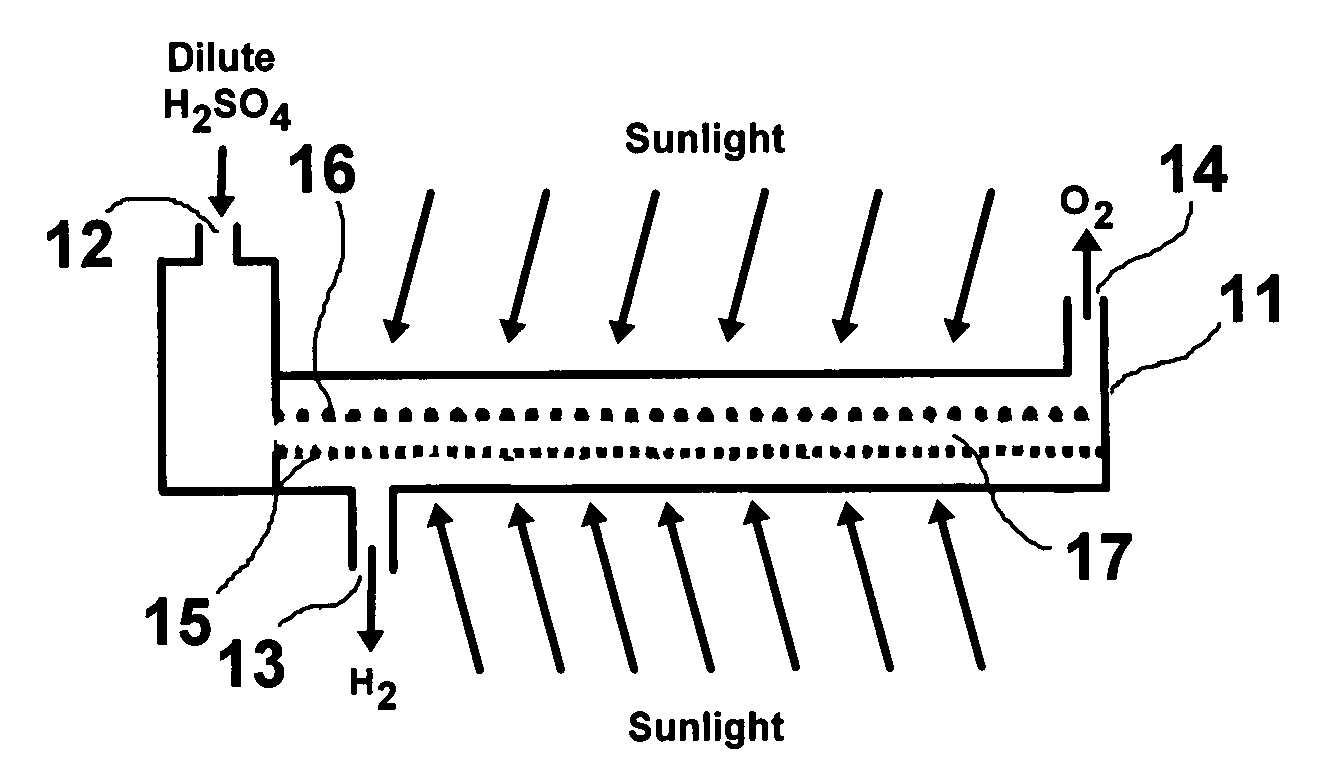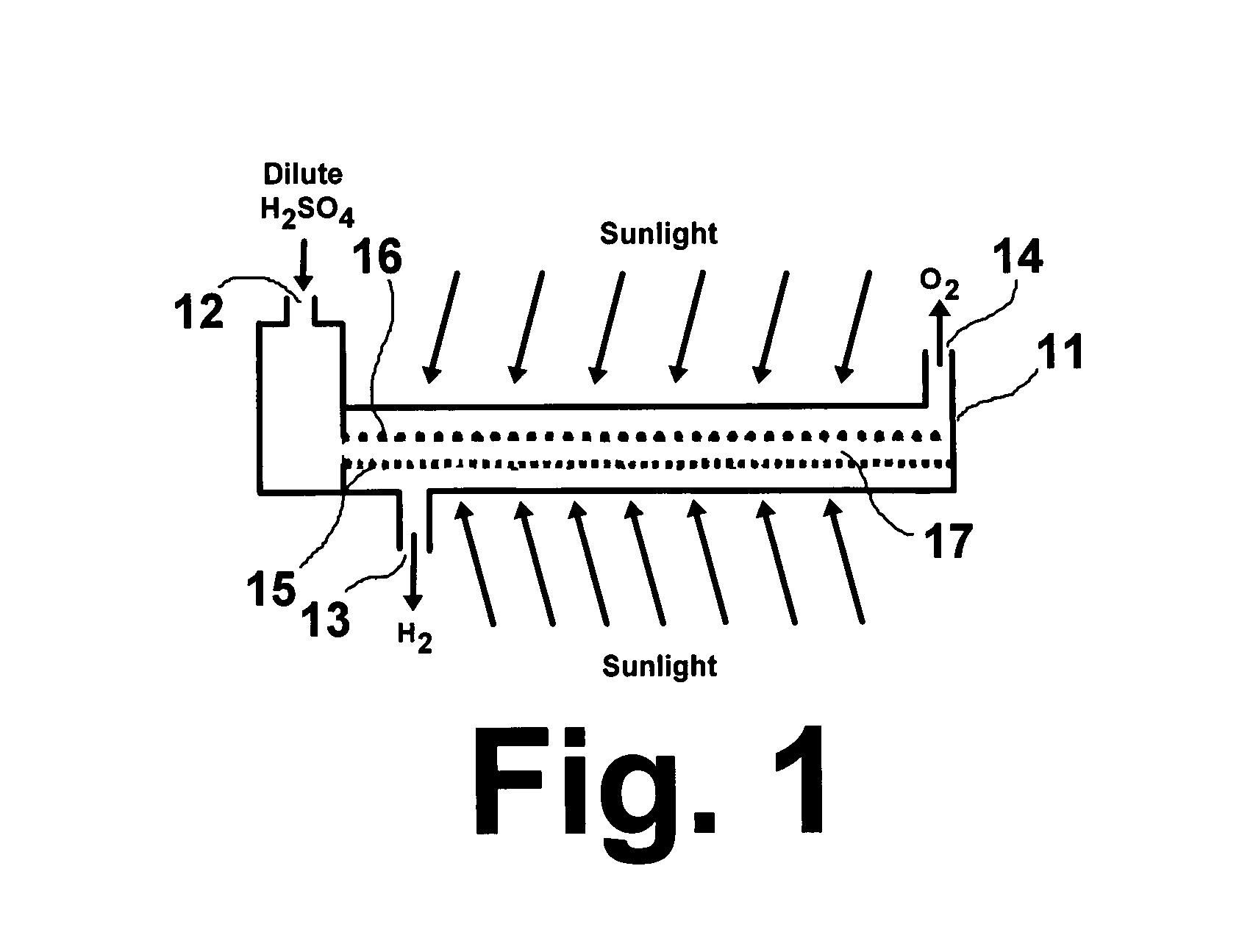Solar hydrogen charger
a solar energy and charger technology, applied in the field of solar energy chargers, can solve the problems of low efficiency, limited system life, and high overpotential of photoelectrodes, and achieve the effects of reducing irradiance losses, avoiding corrosion of important semiconductor photoelectrodes, and allowing maximum direct solar irradian
- Summary
- Abstract
- Description
- Claims
- Application Information
AI Technical Summary
Benefits of technology
Problems solved by technology
Method used
Image
Examples
example
[0025]A titanium gauze (40 mesh from Alfa Aesar) was cleaned ultrasonically in distilled water, acetone, and distilled water again to remove any contaminants. The electrode was then etched in a 4 wt % concentration of HF and rinsed with distilled water. The Ti gauze electrode was used as the working electrode, a graphite rod was used as the auxiliary electrode, and a 1.0 M H2SO4 solution was used as the electrolyte with various metal salt solutions for doping metal having particle sizes in the range of about 3 nm to about 100 nm into the nano-crystalline TiO2 structure. The anode potentials were controlled at 120V for one (1) minute to obtain the TiO2 layered films interval and to −0.5V for 30 seconds for metal doping. Three cycles of oxidation and reduction processes were carried out to obtain the desired thickness and porosity. The high oxidation potential to make TiO2 produces a substantial amount of gas evolution, which generates pores in the catalyst layer. The negative voltage...
PUM
| Property | Measurement | Unit |
|---|---|---|
| voltage | aaaaa | aaaaa |
| current density | aaaaa | aaaaa |
| cell voltage | aaaaa | aaaaa |
Abstract
Description
Claims
Application Information
 Login to View More
Login to View More - R&D
- Intellectual Property
- Life Sciences
- Materials
- Tech Scout
- Unparalleled Data Quality
- Higher Quality Content
- 60% Fewer Hallucinations
Browse by: Latest US Patents, China's latest patents, Technical Efficacy Thesaurus, Application Domain, Technology Topic, Popular Technical Reports.
© 2025 PatSnap. All rights reserved.Legal|Privacy policy|Modern Slavery Act Transparency Statement|Sitemap|About US| Contact US: help@patsnap.com



